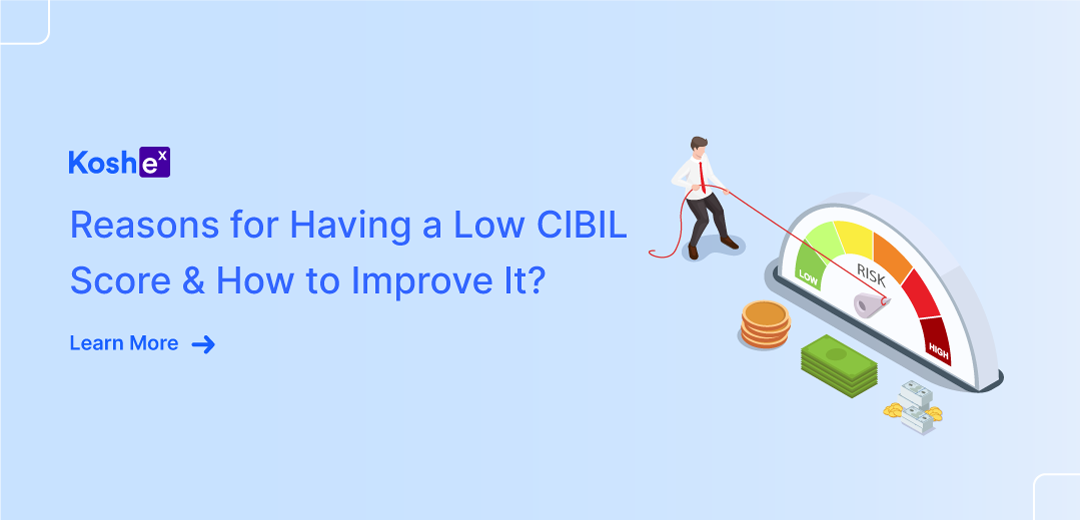In the world of personal finances, choosing the right amount for your SIP can be a big achievement. It is the key to unlocking your financial aspirations and ensuring that your money works diligently to achieve your goals. Whether it is planning for a dream vacation, securing your child’s education, or building comfortable retirement savings, SIPs (Systematic Investment Plans) can be your trusted companion.
In this article, we will explore the world of SIP investments, understanding their significance and sharing insights into selecting the right SIP amount. By the end of this article, you will be well-equipped to make informed financial decisions. Sign up with Koshex today and take the first step towards financial prosperity.
How to Choose SIP Amount
Starting your investment journey with Systematic Investment Plans (SIPs) is a pivotal step towards securing your financial future. However, choosing the right SIP amount is essential as it affects the achievement of your financial goals.
The following are the points to keep in mind while choosing the right SIP amount:
Define Your Financial Goals
Before determining your SIP amount, clearly outline your financial objectives. Whether it is buying a house, funding your child’s education, or building a retirement corpus, having well-defined goals will help you quantify your financial needs.
Assess Your Current Financial Situation
Evaluate your income, expenses, and existing financial commitments. This assessment will give you a realistic view of how much you can comfortably invest without straining your budget.
Create a Realistic Budget
A well-structured budget is your financial roadmap. It should include your monthly expenses, savings, and investments. Allocate a portion of your monthly surplus towards your SIP investments. Remember to keep your budget realistic and flexible.
Platforms like Koshex provide the tools and insights you need to estimate your investment capacity effectively. With Koshex, you can track your net worth, analyze your financial health, and receive hyper-personalized recommendations. Sign up with Koshex today!
Consider Your Risk Tolerance
Assess how comfortable you are with market fluctuations and potential losses. Your risk tolerance will influence the choice of funds and the amount you should invest in SIPs.
Utilizing Online SIP Calculators
Online SIP calculators are invaluable tools. They take your investment amount, tenure, expected returns, and compounding frequency into account to provide a projection of your future wealth. Use these calculators to fine-tune your SIP amount.
Here is a closer look at how SIP calculators work, the benefits they offer, and a step-by-step guide on using them effectively.
How SIP Calculators Work:
SIP calculators use a few key inputs to provide you with a projected value of your investments over a specified period. You can use the Koshex SIP Calculator to seamlessly determine your SIP amount.
Investment Amount
You start by entering the amount you plan to invest in your SIP. This could be a one-time lump sum amount or a regular monthly investment.
Investment Tenure
SIP calculators allow you to specify the duration for which you intend to invest. It can range from a few months to several years, depending on your financial goals.
Expected Rate of Return
You input an estimated rate of return, which is usually based on the historical performance of the mutual fund or the asset class you plan to invest in.
Frequency of investments
SIPs involve monthly investments, but you can specify other frequencies like quarterly or annually, depending on your preferences. The SIP calculator uses complex mathematical formulas to calculate the potential future value of your investments.
Reviewing and Adjusting Your SIP Amount
SIP (Systematic Investment Plan) is a dynamic investment strategy that requires periodic review and adjustments.
Here is why regularly evaluating and modifying your SIP amount is essential for financial success.
SIP Amount is a Dynamic Component:
Your SIP amount should not remain static throughout your investment journey. Instead, consider it as a dynamic component that can and should change over time.
Here is why:
Changing objectives
As your financial goals evolve, your investment needs may change. For instance, if you initially started your SIP to save for a down payment on a house but have now achieved that goal, you might want to redirect those funds towards a different objective, like retirement.
Income Variability
Your income may not always remain constant. Salary hikes, bonuses, or even changes in employment can impact your ability to invest more or less. Adapting your SIP amount to reflect these changes ensures you are making the most of your financial situation.
Market Conditions
Economic conditions and market performance can fluctuate. During bullish periods, you might consider increasing your SIP amount to capitalize on potential growth opportunities. Conversely, in a bear market, you may decide to reduce your SIP amount to mitigate risk.
Final Takeaways
Choosing the right SIP amount is your key to achieving financial goals with confidence. In this comprehensive article, we highlighted some crucial aspects like the importance of defining your objectives to achieve your objectives. The role of SIP in providing discipline and consistency in the wealth-building journey.
Treating your SIP amount as a dynamic component of your financial plan allows you to adapt to changing circumstances and optimize your investments. Regular evaluation, prudent adjustments, and professional guidance can help you make the most of your SIP, ultimately leading you closer to achieving your financial goals.
We also covered how estimating your investment capacity ensures that your goals are realistic and manageable. SIP adapts as you grow, preventing overcommitment. The need to diversify your SIP portfolio was also highlighted as it mitigates risk and enhances returns.
With Koshex, you gain access to personalized insights and seamless transactions, simplifying your financial journey. Sign up today to unlock your financial potential.
Frequently Asked Questions (FAQs)
Q1. What exactly is a SIP (Systematic Investment Plan)?
Ans. SIP, or Systematic Investment Plan, is an investment strategy where you invest a fixed amount of money at regular intervals (typically monthly) in mutual funds or other investment instruments. It is designed to help you save and invest in a disciplined manner to achieve your financial goals.
Q2. How do I determine the right SIP amount for my financial goals?
Ans. Choosing the right SIP amount depends on factors like your financial goals, risk tolerance, and current financial situation. You can use the online SIP calculators of Koshex to help you decide on an appropriate amount.
Q3. Can I adjust my SIP amount over time?
Ans. Yes, SIPs offer flexibility. As your income and financial goals change, you can increase or decrease your SIP amount to align with your evolving needs.
Q4. What are the benefits of using online SIP calculators?
Ans. Online SIP calculators help you estimate the future value of your investments, considering factors like investment amount, tenure, expected returns, and frequency. They provide insights into how your investments may grow over time, aiding in informed decision-making.
Q5. Why are diversification and asset allocation important for SIP investments?
Ans. Diversification involves spreading your investments across different asset classes to manage risk. Asset allocation is the process of deciding how to distribute your investments among these asset classes. Both strategies are crucial in ensuring a balanced and risk-managed SIP portfolio.









Leave a Comment